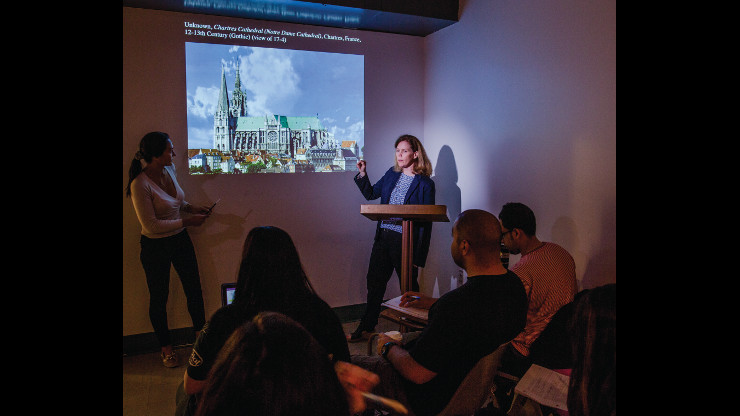Caldwell University
May 11, 2016
Art Department’s Dr. Jennifer Noonan Selected To Participated In Special Seminar On Teaching European Art

Caldwell, N.J. – Caldwell University is pleased to announce that Art History Professor Jennifer Noonan is one of a select group of faculty members nationwide chosen by the Council of Independent Colleges (CIC) to participate in a special week-long seminar on Teaching Pre-Modern European Art in Context. The seminar on “Sight and Sound in Renaissance and Baroque Europe [c. 1300–1700]” will be hosted by the High Museum of Art in Atlanta, Georgia, June 20–24, 2016. The seminar is designed for full-time faculty members who regularly teach art history at smaller colleges and universities and aims to strengthen the teaching of art history to undergraduates at these institutions.
CIC selected 21 faculty members to participate in the seminar, which is supported by the Samuel H. Kress Foundation. Two eminent scholars will lead the program: Gary Radke, professor emeritus of art history at Syracuse University, and Amanda Winkler, associate professor of music history and cultures at Syracuse.
“Strengthening the teaching of art history at colleges and universities—many of which have limited faculty resources in art history—is critical,” said CIC President Richard Ekman. “The seminar will have significant value for the faculty members who participate, the colleagues with whom they will share their new knowledge, and the students who enroll in their courses.”
The seminar, based at the High Museum, will explore how viewers and listeners experienced art and music in the Renaissance and Baroque periods. Special emphasis will be placed on developing period eyes and ears and on learning to listen to music and view art as people did in Europe c. 1300–1700. Participants will read and discuss scholarly articles and original texts from the period to prepare themselves for direct encounters with European art in the museum and with live and recorded performances of Early Music. The seminar also will explore commonalities and rivalries between the visual arts and music and their practitioners and patrons. Throughout the seminar, participating faculty members will have the opportunity to hone and share educational strategies for visual analysis, conversation, slow looking, and digital interpretation.
Dr. Barbara J. Chesler, vice president for academic affairs, says the university is very excited that Dr. Noonan was chosen to participate in the seminar. “As an art historian, this seminar will provide her the opportunity to understand the specifics of music and its connection to art. She is a strong student-centered educator and I know this will enhance her knowledge and hence the academic experiences of our students.”
For more information, visit the CIC website at www.cic.edu/ArtHistory.
* * *
The Council of Independent Colleges is an association of 765 nonprofit independent colleges and universities and higher education affiliates and organizations that has worked since 1956 to support college and university leadership, advance institutional excellence, and enhance public understanding of private higher education’s contributions to society. CIC is the major national organization that focuses on providing services to leaders of independent colleges and universities as well as conferences, seminars, and other programs that help institutions improve educational quality, administrative and financial performance, and institutional visibility. CIC conducts the largest annual conference of college and university presidents and of chief academic officers. CIC also provides support to state fundraising associations that organize programs and generate contributions for private colleges and universities. The Council is headquartered at One Dupont Circle in Washington, DC.
The High Museum of Art was founded in 1905 as the Atlanta Art Association and today is the leading art museum in the southeastern United States, with a membership base of over 50,000 that ranks it among the top ten art museums in the nation. Located in Atlanta’s midtown arts and business district, the High has nearly 12,000 works of art in its permanent collection, with holdings and curatorial positions in the following art disciplines: American, European, decorative arts and design, folk, modern and contemporary, and African. The European collection includes the Kress collection of Renaissance and Baroque paintings, sculpture, and decorative arts.





